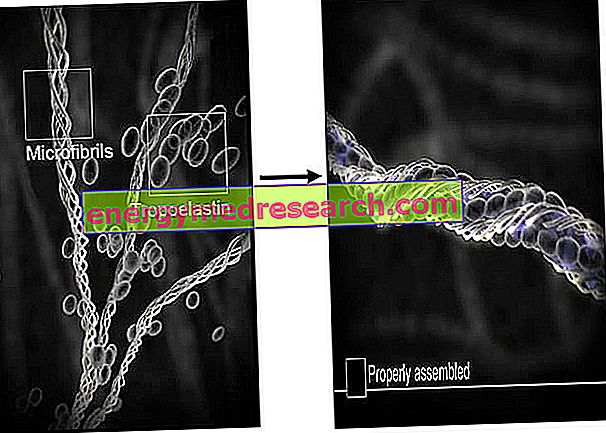Generality
Tonnata is a seasoning sauce designed for cold consumption.
It is particularly suitable for meat-based recipes: roasts, sandwiches / sandwiches with egg and / or salami (especially stuffed ham, shoulder, roast turkey or chicken, roast - veal beef, frankfurters, etc.) canapés, raw vegetables and boiled vegetables (cauliflower, carrots, potatoes, courgettes, onion, peas, turnips, etc.).

Notes on the Recipe
The tuna sauce is made up of a few ingredients and requires a fairly simple process.
There are two versions, both very common and used: with mayonnaise and boiled eggs.
Version 1: Tuna Sauce with Mayonnaise
Ingredients
Tuna in oil, anchovies in oil, salted capers, lemon juice, fresh chopped parsley and homemade mayonnaise.
For mayonnaise: chicken eggs (only egg yolks), extra virgin olive oil, lemon (optional a little vinegar), salt and white pepper.
NB : It is quite important to use COLD ingredients and not at room temperature, so as to immediately give the food its density and body.
Method
- Prepare the mayonnaise according to the traditional recipe.
- Soak the capers to desalinate them; then put them in a food processor to chop them together with: drained in oil tuna, anchovies, a few tablespoons of mayonnaise and lemon juice; alternatively it is possible to beat the whole thing with a knife (chop).
- Finish by adjusting the density by adding more mayonnaise.
- Season with salt and ground white pepper.
- Add the finely chopped fresh parsley.
Version 2: Tuna Sauce with Boiled Eggs
Ingredients
Tuna in oil, anchovies in oil, salted capers, hard boiled eggs, extra virgin olive oil or other liquid ingredients (such as lemon juice, vinegar, white background, brown stock etc.), salt and white pepper.
Method
- Boil the eggs and shell them.
- Soak the capers to desalinate them.
- Break all the ingredients into a food processor / blender glass: (drained in oil tuna, anchovies, capers, boiled eggs and oil / other liquid); alternatively it is possible to beat the whole thing with a knife (chop).
- Finish by adjusting the density with other oil or liquid.
- Season with salt and ground white pepper.
- Add the finely chopped fresh parsley.
Optional
Enrich the sauce with the vegetables used to create the light or brown background (typical of roasts and cooking in a pan).
Store in the fridge for two or three days at the most.
Salsa tonnata sauce - without eggs
X Problems with video playback? Reload from YouTube Go to Video Page Go to Video Recipes Section Watch the video on youtubeVariations
Optional: enrich with pitted black olives cut into rounds. Decorate with anchovy fillets and capers.
Store in the fridge for a day or two at most.
Variations: some variations of tuna sauce affect:
- The type of mayonnaise: packaged or homemade. The classic one can be replaced by a light / light version or yogurt.
- The use of whole eggs rather than just egg yolks.
- The use of hard-boiled eggs
- The type of capers and anchovies: preserved differently (pickled, in salt, in oil, etc.).
The substitution or the percentage variation of one or more ingredients involves different changes in the finished food: taste, consistency, nutritional intake and conservation.
Using mainly packaged ingredients (to which are added preservative food additives), the tuna sauce maintenance time increases significantly compared to the same made with fresh ingredients.
Nutritional Features
TRADITIONAL tuna sauce is not a food recommended for customary nutrition; it has a very high energy intake and contains significant amounts of cholesterol and sodium.
Calories are supplied mainly by lipids, followed by proteins and finally by carbohydrates.
Fatty acids are mainly monounsaturated, peptides with high biological value and simple sugars.
The cholesterol concentration is quite high; the fibers are almost irrelevant.
Among the minerals good concentrations of desirable nutrients are not observed, while the sodium intake is considerable. The latter is a mineral that is potentially harmful for sodium-sensitive hypertensive subjects and for those suffering from gastritis.
Vitamins include a good niacin content (vit. PP), retinol equivalent (vitamin A) and tocopherols or tocotrienols (vitamin E).
Due to the very high energy content, the tonnata sauce does not lend itself to the nutritional regime of those who suffer from overweight.
The considerable amount of cholesterol makes this condiment unsuitable for the diet against hypercholesterolemia (even if the profile of fatty acids is not the worst).
| Tuna Sauce Version 1 | Tuna Sauce Version 2 | ||
| Edible part | 100.0% | 100.0% | |
| water | 45, 5g | 65, 6g | |
| Protein | 16, 6g | 14, 5g | |
| Prevailing amino acids | - | - | |
| Limiting amino acid | - | - | |
| Lipids TOT | 28, 7g | 16, 0g | |
| Saturated fatty acids | 5, 83g | 3, 38g | |
| Monounsaturated fatty acids | 18, 95g | 10, 26g | |
| Polyunsaturated fatty acids | 3, 93g | 2, 38g | |
| Cholesterol | 313, 5mg | 214, 4mg | |
| TOT Carbohydrates | 0.4g | 0.6g | |
| Starch | 0.2g | 0.2g | |
| Soluble sugars | 0.2g | 0.4g | |
| Dietary fiber | 0.2g | 0.2g | |
| Soluble fiber | -g | -g | |
| Insoluble fiber | -g | -g | |
| Power | 326, 2kcal | 204, 3kcal | |
| Sodium | 517, 0mg | 503, 5mg | |
| Potassium | 187, 0mg | 168, 9mg | |
| Iron | 1, 94mg | 1, 6mg | |
| Football | 60, 3mg | 51, 7mg | |
| Phosphorus | 261, 9mg | 188, 7mg | |
| Thiamine | 0, 07mg | 0.05 mg | |
| Riboflavin | 0, 13mg | 0, 17mg | |
| Niacin | 6, 02mg | 4, 28mg | |
| Vitamin A | 134, 0RAE | 94, 9RAE | |
| C vitamin | 0, 22mg | 0, 22mg | |
| Vitamin E | 6, 00mg | 3, 33mg | |
Possible Variations
The nutritional intake of tuna sauce varies mainly depending on the type of mayonnaise, oil, canned tuna and the type of preservation of capers and anchovies.
Using light mayonnaise or yogurt (see the recipe: Light Mayonnaise and Yogurt Mayonnaise) it is possible to significantly reduce the amount of fat, calories and cholesterol.
NB . The use of light mayonnaise is complicated by the chemical and physical instability of the emulsion.
Choosing tuna in brine will significantly reduce the amount of total lipids, but to obtain the right consistency it is often necessary to add oil during processing. Alternatively, aqueous liquids can be used but the result is not the same.
Changing the type of oil (extra virgin olive or corn) changes the profile of fatty acids (mainly monounsaturated omega 9 or polyunsaturated omega 6).
Preferring anchovies and capers in salt, a tuna sauce of greater organoleptic value is obtained; however this leads to a drastic increase in sodium.



